Search results for 'de 100 dias de'
-
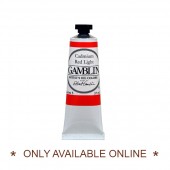
Gamblin Oil Colours 37ml
Starting at: £11.20
*Only available online*. Robert Gamblin started making artists' oil paints in 1980. Since then he has built a reputation as both an innovative and imaginative maker of some of the best oils on the market today. As well as usual single pigment colours you would expect, the range also includes an interesting selection of neutral greys, beautiful metallics and the truly innovative Radiant range of pastel colours. Combining science and artistry, Gamblin paints are truly exceptional. *Please note, this range is stored offsite. Please allow extra time for your order to be processed and dispatched. Learn More -

Somerset Enhanced Inkjet Paper
Starting at: £52.80
225GSM, A4 / A3+, Satin / Velvet / Textured Surface, 100% Cotton, pH Neutral, Coated on one side, Radiant White. Learn More -

Gamblin Oil Colours 150ml
Starting at: £27.20
* Only available online.* Robert Gamblin started making artists' oil paints in 1980. Since then he has built a reputation as both an innovative and imaginative maker of some of the best oils on the market today. As well as usual single pigment colours you would expect, the range also includes an interesting selection of neutral greys, beautiful metallics and the truly innovative Radiant range of pastel colours. Combining science and artistry, Gamblin paints are truly exceptional. *Please note, this range is stored offsite. Please allow extra time for your order to be processed and dispatched. Learn More -
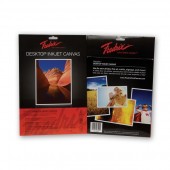
Fredrix Inkjet Canvas Pack
Starting at: £16.90
Call to Order
340GSM, A4, 10 Sheets, Poly-Cotton Blend. Learn More -
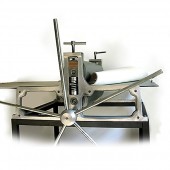
Cornelissen T73140 Professional Press
£3,800.00Cornelissen Press T73140, Bed size: 73 x 140 cm, Upper Roller Diameter: 157 mm, Lower Roller Diameter: 157mm, Etching press base: 78.5 x 91 cm. Weight: 148 kg. We offer press demonstrations for this model. Please call Cornelissen for more details. This press is made to order. Delivery to your address usually takes up to 4 weeks to UK & EU countries and 6 weeks to USA after the order is placed. Please be aware these goods are heavy and it is the customer’s responsibility to check measurements for delivery before orders are placed and to be able to receive the goods over two days.
Learn More -
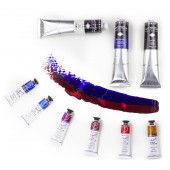
Daler-Rowney Artists' Oil Colour
Starting at: £10.15
The distinctive buttery consistency of Daler-Rowney Artists' Oils derives from the use of linseed oil and wax, which acts as a plasticiser, helping to prevent even heavy impasto from becoming brittle and cracking over time. Learn More -
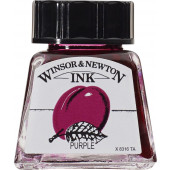
Winsor & Newton Drawing Inks
Starting at: £4.80
The Winsor & Newton Drawing Inks can be intermixed and diluted with distilled water. Not lightfast (except Black and White). All colours are transparent and water resistant once dry (except Gold & Silver). Learn More -
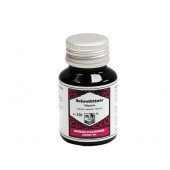
Rohrer and Klingner Writing Ink 50ml
Starting at: £6.40
Writing Ink (series 40). Dye based inks suitable for fountain pens and many other calligraphy tools. Not waterproof or lightfast. The range of 18 shades includes two Iron Gall inks modified from a traditional recipe to be suitable for fountain pens. The Iron Gall inks are lightfast, deepen in colour with oxidisation over time and are permanent. All colours, with the exception of Sepia, are intermixable. Learn More -
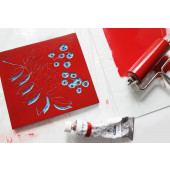
Schmincke Lino Water-based Inks 35ml
Starting at: £7.75
Water based inks for block printing and linocut. Learn More -
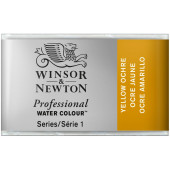
W&N Professional Watercolour Whole Pan
Starting at: £9.55
Water colour, more than any other medium, reflects the unique characteristics of the pigments used and our Professional Water Colours use only the finest pigments, and are known for their brilliance, permanence and strength of colour. Learn More
-
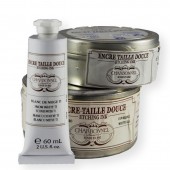
-
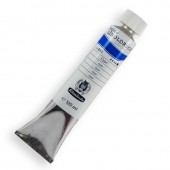
Schmincke Lino Water-based Inks 120ml
Starting at: £14.90
Water based inks for block printing and linocut. Learn More -
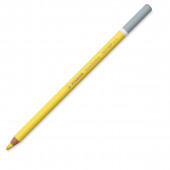
STABILO CarbOthello Pastel Pencils
Starting at: £2.05
STABILO CarbOthello is a chalk pastel coloured pencil range available in up to 60 colours. With its wonderfully dry and dusty stroke it is just like a chalk pastel in pencil format. It's very popular with artists, art students and people with creative hobbies. Its high pigmentation guarantees great luminosity and opacity as well as colour fastness and colour brilliance especially on dark backgrounds and delicate papers. What's more it can be sharpened to a very fine tip which make it ideal for detail. Colours can be dry mixed and blended which makes colouring more fun and special.
Learn More -
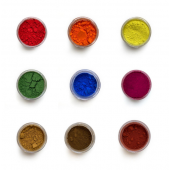
-

Cornelissen Silverpoint Pencil
£22.95The Cornelissen Silverpoint Pencil is comprised of a wooden handle sheathing a 50 mm length of silver. Diameter of the silver point is 1.6 mm. Overall length is 175 mm. The silver point can be sharpened or rounded like a lead pencil. Learn More -
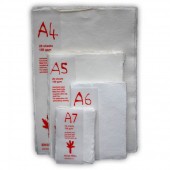
Khadi White Rag Paper Packs 150gsm
Starting at: £2.85
Handmade Paper, 100% Long Fibred Cotton Rag, Acid free, Medium-Rough surface, Deckle Edged. All papers are internally sized with neutral pH size. Learn More -
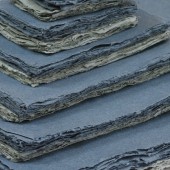
Khadi Grey Paper Packs
Starting at: £2.85
Handmade from 100% long fibred cotton rag. Acid free. Deckle edge. Tub sized (surface sized) with gelatine. Learn More -
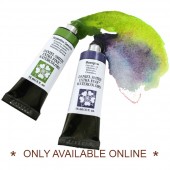
Daniel Smith Artists Watercolour 15ml Tube
Starting at: £13.40
DANIEL SMITH currently offers 245 different watercolours, with more in the works every year. The sheer range of possibility they offer is endless and unparalleled in the industry. Their amazing selection spans the spectrum from the historical, to natural earth and PrimaTek colours, to Quinacridones, the brightest and boldest colours modern technology has to offer. We stock a core range of 77 colours in the large 15ml tubes. *Please note, this range is stored offsite. Please allow extra time for your order to be processed and dispatched. Learn More -

Schmincke Liquid Frisket
Starting at: £5.40
Drawing gum for masking specific areas which should remain white on water-colour paper, smooth drawing carton, photographs or films. Apply with writing pen, cotton bud or wooden stick. Contains: synthetic resin dispersion without ammonia. Learn More -
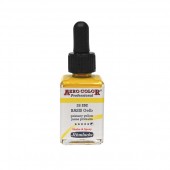
Schmincke Aerocolour Inks
Starting at: £8.30
A highly concentrated acrylic pigmented colour suitable for drawing pens, calligraphy, brush and airbrush techniques. 36 standard colours and 12 'special effects' colours. Lightfast and waterproof when dry. Glass Jar with dropper. Learn More -
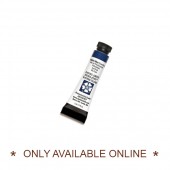
Daniel Smith Artists Watercolour 5ml Tube
Starting at: £7.20
The 5ml range consists of 88 colours and includes some of the fabulous Primatek colours that are handmade with authentic mineral pigments and Quinacridones with their pure, intense colour combining the power of staining pigments with the luminosity of the transparents. They also have the more traditional favourites. *Please note, this range is stored offsite. Please allow extra time for your order to be processed and dispatched. Learn More -
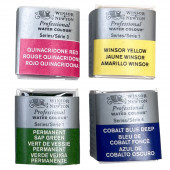
W&N Professional Watercolour Half Pan
Starting at: £7.90
Water colour, more than any other medium, reflects the unique characteristics of the pigments used. Winsor & Newton Professional Water Colours use only the finest pigments and are known for their brilliance, permanence and strength of colour. Learn More
-
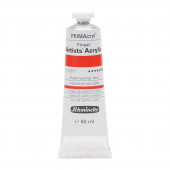
Schmincke PRIMAcryl 60ml
Starting at: £7.60
[ONLY AVAILABLE ONLINE] Schmincke PRIMAcryl is a high viscosity premium acrylic range of 84 premium shades. Artists quality high pigment content gives all the shades a new dimension of brilliance and expressiveness. The titanium white is unparalleled. It's high pigmentation, opacity and cover rate enables incredibly brilliant mixtures. No colour shift between the wet and dry states. High lightfastness level either 4 or 5 stars indicates the quality of these premium acrylic paints. All colours do not yellow and the dried paint layers are durable, flexible and water resistant. *Please note, this range is stored offsite. Please allow extra time for your order to be processed and dispatched. Learn More -
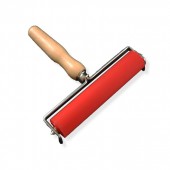
-
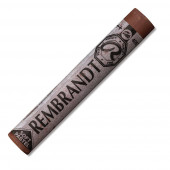
Rembrandt Soft Pastels
Starting at: £3.25
A range of 203 shades. Made in Holland. Intermediate hardness (softer than Conte crayons but harder than Schmincke soft pastels). 12% Discount for purchasing 10+ pastels. Learn More -
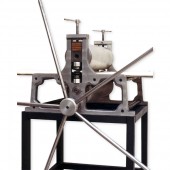
Cornelissen T52100 Professional Press
£3,250.00Cornelissen Press T52100, Bed size: 52 x 100 cm, Upper Roller Diameter: 157 mm, Lower Roller Diameter: 157mm, Weight: 106 kg. Etching press base: 58 x 63 cm. We offer press demonstrations for this model. Please call Cornelissen for more details. Delivery to your address usually takes up to 4 weeks to UK & EU countries and 6 weeks to USA after the order is placed.
Learn More -

Cornelissen T52100B Professional Press
£2,150.00Cornelissen Etching Press T52100B 52 x 100 cm, Bed size: 52 x 100 cm, Upper Roller Diameter: 110 mm, Lower Roller Diameter: 110mm, Weight: 83 kg. Etching press base: 56 x 44 cm. Please call Cornelissen for more details. Delivery to your address usually takes up to 4 weeks to UK & EU countries and 6 weeks to USA after the order is placed. Please be aware these goods are heavy and it is the customer’s responsibility to check measurements for delivery before orders are placed and to be able to receive the goods over two days.
Learn More -
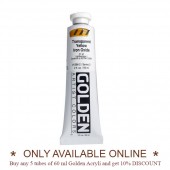
Golden Heavy Body Acrylic 59ml
Starting at: £11.70
The first acrylic colors offered by Golden Acrylic, Heavy Body paints are known for their exceptionally smooth, buttery consistency. The Heavy Body palette includes the largest assortment of unique pure pigments in a 100% acrylic emulsion available to professional artists. These colours offer excellent permanency and lightfastness. There are no fillers, extenders, opacifiers, toners, or dyes added. MULTI-BUY DISCOUNT Buy any five tubes of 59ml Golden Acrylic Heavy and get 10% discount. *Please note, this range is stored offsite. Please allow extra time for your order to be processed and dispatched. Learn More -
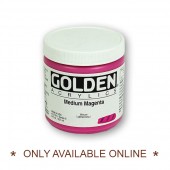
Golden Heavy Body Acrylic 236ml
Starting at: £29.40
The first acrylic colors offered by Golden Acrylic, Heavy Body paints are known for their exceptionally smooth, buttery consistency. The Heavy Body palette includes the largest assortment of unique pure pigments in a 100% acrylic emulsion available to professional artists. These colours offer excellent permanency and lightfastness. There are no fillers, extenders, opacifiers, toners, or dyes added. *Please note, this range is stored offsite. Please allow extra time for your order to be processed and dispatched. Learn More -
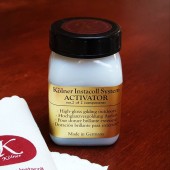
Instacoll Gilding System
Starting at: £6.85
Kölner Instacoll is a two-part system, consisting of a base coat and activator, that can be used on nearly all suitably prepared substrates to create weather-resistant, high gloss interior and exterior gilded surfaces. The Instacoll Tool is a double-ended tool with shaped tips made of elastic rubber, designed for pressing gold and silver transfer leaf into indentations when gilding uneven surfaces. The Instacoll Chiffonnette is an extra soft, lint-free cloth, used for polishing and burnishing surfaces gilded with Instacoll. *PLEASE NOTE - COLOURS OF THESE PRODUCTS MAY VARY SLIGHTLY FROM PRODUCTS PICTURED* Learn More




